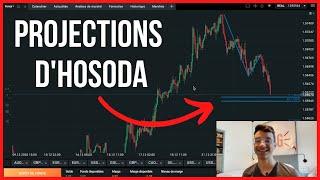Despite delivering stronger-than-expected earnings, Amazon’s stock is trending as investors weigh several emerging concerns that could impact its long-term trajectory.
Consider Supporting this Channel via PayPal: https://www.paypal.com/donate/?hosted_button_id=7G8U47SFTSWLL
While the headline numbers were positive — with robust revenue growth and solid profitability — the market’s reaction has been tempered by apprehension over the company’s rising capital expenditures, particularly related to infrastructure investments for its AWS cloud division and its expanding logistics network.
A key point of debate is AWS, Amazon’s crown jewel and primary profit engine, where operating margins have shown signs of pressure. Investors worry that intensifying competition from Microsoft Azure, Google Cloud, and emerging AI-native startups could further squeeze margins, especially as Amazon ramps up spending to integrate AI capabilities and upgrade its data centers to handle more advanced workloads.
Another factor weighing on sentiment is the company’s forward guidance. Some analysts see hints that Amazon may be bracing for a softer revenue outlook in the coming quarters, potentially due to cautious consumer spending, lingering macroeconomic uncertainty, or shifts in e-commerce demand post-pandemic.
Adding to the mix are fresh concerns about potential new tariffs and regulatory pressures, particularly in light of the ongoing trade tensions between the US and China. This has fueled speculation about how rising input costs and supply chain disruptions could impact Amazon’s retail margins and pricing power.
Investor sentiment is currently split. Some traders see the recent dip as an attractive entry point, arguing that Amazon’s scale, diversified business model, and aggressive push into AI and logistics automation position it well for long-term growth. On the other hand, more cautious voices point to questions about leadership under CEO Andy Jassy, the company’s ability to maintain its competitive edge in the hyper-competitive cloud and AI arms race, and whether its heavy spending will yield sufficient returns in a challenging macro environment.
Overall, the conversation reflects a broader debate about whether Amazon’s best days are still ahead, or if structural headwinds and execution risks could weigh on its premium valuation in the quarters to come.
Consider Supporting this Channel via PayPal: https://www.paypal.com/donate/?hosted_button_id=7G8U47SFTSWLL
While the headline numbers were positive — with robust revenue growth and solid profitability — the market’s reaction has been tempered by apprehension over the company’s rising capital expenditures, particularly related to infrastructure investments for its AWS cloud division and its expanding logistics network.
A key point of debate is AWS, Amazon’s crown jewel and primary profit engine, where operating margins have shown signs of pressure. Investors worry that intensifying competition from Microsoft Azure, Google Cloud, and emerging AI-native startups could further squeeze margins, especially as Amazon ramps up spending to integrate AI capabilities and upgrade its data centers to handle more advanced workloads.
Another factor weighing on sentiment is the company’s forward guidance. Some analysts see hints that Amazon may be bracing for a softer revenue outlook in the coming quarters, potentially due to cautious consumer spending, lingering macroeconomic uncertainty, or shifts in e-commerce demand post-pandemic.
Adding to the mix are fresh concerns about potential new tariffs and regulatory pressures, particularly in light of the ongoing trade tensions between the US and China. This has fueled speculation about how rising input costs and supply chain disruptions could impact Amazon’s retail margins and pricing power.
Investor sentiment is currently split. Some traders see the recent dip as an attractive entry point, arguing that Amazon’s scale, diversified business model, and aggressive push into AI and logistics automation position it well for long-term growth. On the other hand, more cautious voices point to questions about leadership under CEO Andy Jassy, the company’s ability to maintain its competitive edge in the hyper-competitive cloud and AI arms race, and whether its heavy spending will yield sufficient returns in a challenging macro environment.
Overall, the conversation reflects a broader debate about whether Amazon’s best days are still ahead, or if structural headwinds and execution risks could weigh on its premium valuation in the quarters to come.
- Catégories
- E commerce Entreprises














Commentaires